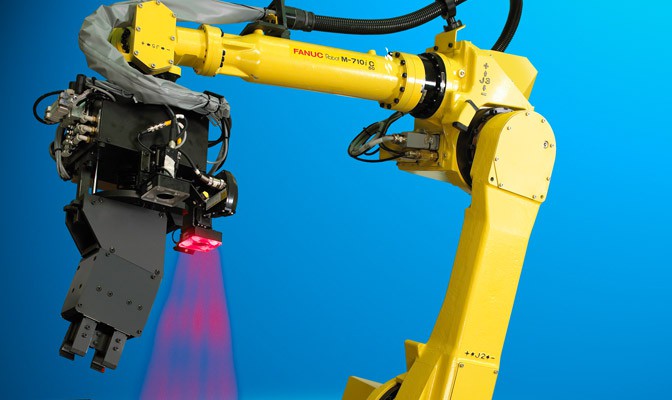How small manufacturers can benefit from optical fibre diameter analyser
Checking out the Duty of an Optical Fibre Diameter Analyser in Ensuring Item Top Quality
The duty of an optical fibre diameter analyser is essential in keeping product quality within the telecom industry. These gadgets measure fibre diameter with accuracy, guaranteeing uniformity and efficiency. Variants in diameter can result in substantial signal loss, influencing communication reliability. As makers go for quality, understanding the mechanisms behind these analysers ends up being important. What developments exist in advance in this field, and just how will they form the future of optical fibre production?
Recognizing Optical Fibre Diameter Dimension
Measuring the diameter of optical fibres is a vital process in ensuring the performance and dependability of fibre optic systems. Accurate measurement is essential, as variants in diameter can significantly affect signal transmission and total system effectiveness. The measurement process usually employs advanced tools and methods, such as laser micrometers or optical fibre diameter analysers, which offer precise, real-time data.These tools can evaluate fibres' diameters with extreme precision, usually to micrometre levels. This accuracy aids recognize possible problems or variances in the production process. Additionally, understanding the diameter measurement includes acknowledging the importance of factors such as temperature level, stress, and material residential or commercial properties, which can influence the final dimensions. By preserving rigorous measurement procedures, makers can assure that the optical fibres satisfy industry criteria and specs, inevitably adding to the long life and performance of fibre optic networks.
The Importance of Uniformity in Optical Fibre Production
Uniformity in optical fibre production is crucial for guaranteeing precision in making procedures. Variations in diameter can substantially affect performance metrics, influencing the general top quality and reliability of the fibre. Standardization and top quality control steps are important to preserve harmony and enhance item performance.
Accuracy in Production Processes

Effect On Performance Metrics
Making sure harmony in optical fibre diameter significantly affects efficiency metrics across numerous applications. Consistent diameter causes suitable light transmission, lowering signal loss and improving total efficiency. When fibres preserve a common dimension, the likelihood of defects diminishes, improving dependability in telecommunications and data transfer (optical measurement system). Furthermore, uniform sizes promote much easier combination into existing systems, lessening compatibility issues. Variations in diameter can create variations in depletion and diffusion, negatively impacting efficiency. By employing an optical fibre diameter analyser, producers can closely check and adjust production procedures, fostering a greater degree of uniformity. This uniformity not only boosts the top quality of the end product however likewise reinforces customer satisfaction, verifying crucial for preserving competitive benefit in the optical fibre market
Standardization and Quality Assurance

Exactly How Optical Fibre Diameter Analysers Job
Optical fibre diameter analysers run through a mix of light transmission and innovative measurement techniques to properly evaluate the diameter of optical fibres. These devices utilize a laser or LED light resource that produces a light beam guided at the fibre under assessment. As light communicates with the fibre, it is refracted and spread, allowing for precise measurements.The analyser captures the light making use of a high-resolution electronic camera or photodetector, which transforms the optical signals into electric signals. Advanced formulas after that process these signals, computing the diameter based upon the intensity and circulation of the light.The system typically includes calibration features to ensure precision, employing recognized standards to confirm dimensions. By constantly monitoring the fibre diameter, these analysers aid preserve conformity with market requirements and specs, assuring consistent product high quality. Enhanced automation in contemporary analysers additionally improves the process, helping with real-time analysis for producers.
Influence On Signal Stability and Interaction Integrity
A regular and accurate optical fibre diameter is essential for maintaining signal honesty and interaction dependability in fibre optic networks. Variations in diameter can lead to enhanced light loss, resulting in degraded signal top quality and decreased transmission distances. When fibres are not uniform, issues such as modal diffusion and depletion may develop, which can misshape the data being transferred and bring about errors in communication.Furthermore, irregularities in fibre diameter can influence the performance of connectors and splicing, bring about more signal degradation. This inconsistency can endanger the overall reliability of network systems, impacting everything from internet rate to telecommunication clarity.
Enhancing Production Performance With Advanced Modern Technology
Preserving consistent fibre diameter is crucial for guaranteeing trusted communication systems. Advanced innovation, particularly the optical fibre diameter analyser, plays a vital duty in boosting making about his efficiency. By providing real-time measurements and specific data pertaining to fibre diameters, this technology permits producers to quickly recognize inconsistencies from needed specs. Manufacturing procedures can be readjusted promptly, decreasing waste and reducing downtime.The assimilation of automated systems improves top quality control, allowing for constant monitoring throughout the manufacturing procedure. This not just accelerates production but likewise boosts overall item top quality, resulting in fewer problems. Additionally, progressed analytics allow makers to maximize their processes based upon empirical information, promoting constant renovation. Because of this, the optical fibre diameter analyser contributes noticeably to lowering operational prices and enhancing throughput, ultimately cultivating a more competitive edge in the market. By welcoming these improvements, makers can guarantee their items satisfy the highest possible standards of quality and integrity.
Future Fads in Optical Fibre Quality Control
As the optical fibre market progresses, future patterns in quality guarantee will plainly include advancements in measurement modern technology. These advancements will certainly make it possible for more precise analyses of fibre diameter, improving overall item honesty. Additionally, the combination of computerized quality assurance systems promises to enhance processes and enhance uniformity in production.
Advancements in Measurement Modern Technology
With the continuous evolution of optical fibre technology, the need for specific measurement tools is much more critical than ever before. Recent advances in measurement technology have resulted in the advancement of innovative optical fibre diameter analysers that use high-resolution imaging and laser-based techniques. These advancements make it possible for makers to achieve better accuracy and repeatability in diameter measurements, crucial for preserving stringent high quality standards. Furthermore, the integration of expert system and device knowing algorithms boosts data analysis, permitting real-time adjustments during production procedures. As the market accepts these technical improvements, they guarantee to improve efficiency, minimize waste, and ensure the integrity of optical fibres in numerous applications, ultimately sustaining the expanding demand for high-performance interactions facilities.

Automated Quality Assurance Equipment
While the optical fibre market continues to advancement, the execution of computerized quality assurance systems is poised to change quality control processes. These systems make use of innovative formulas and sites real-time data evaluation to keep an eye on fibre diameter and various other vital criteria with unequaled precision. By incorporating optical fibre diameter analysers with automated systems, producers can find inconsistencies from specs immediately, minimizing the danger of issues. Additionally, automation lessens human error, improves uniformity, and speeds up manufacturing timelines. As sectors significantly adopt Industry 4.0 concepts, the duty of automated quality control systems will increase, facilitating a seamless connection between manufacturing and quality control. This shift not only ensures greater item high quality however likewise cultivates advancement and performance throughout the production procedure.
Often Asked Questions
What Variables Affect the Optical Fibre Diameter Measurement Precision?
Variables influencing optical fibre diameter measurement accuracy consist image source of environmental problems, calibration of measurement equipment, operator technique, the level of sensitivity of the determining gadget, and the physical buildings of the fibre itself, such as product composition and surface area irregularities. (optical fibre diameter analyser)
Just How Typically Should Optical Fibre Diameter Analysers Be Adjusted?
Calibration regularity for optical fibre diameter analysers commonly depends upon usage strength and producer suggestions. Routine checks, often regular monthly or quarterly, warranty measurement accuracy and integrity, consequently preserving the stability of the production procedure.
Can Environmental Conditions Influence Dimension Outcomes?
Environmental conditions can substantially influence measurement outcomes. Variables such as temperature level, humidity, and air stress might impact the efficiency of measurement instruments, potentially bring about inaccuracies in the outcomes obtained from optical fibre diameter evaluation.
What Are the Typical Sorts Of Optical Fibre Diameter Analysers?

How Do I Select the Right Analyser for My Manufacturing Needs?
Picking the ideal analyser entails examining production needs, including fibre kind, diameter array, and measurement precision. Furthermore, examining the analyser's calibration, compatibility with existing devices, and interface can significantly affect the decision-making process.